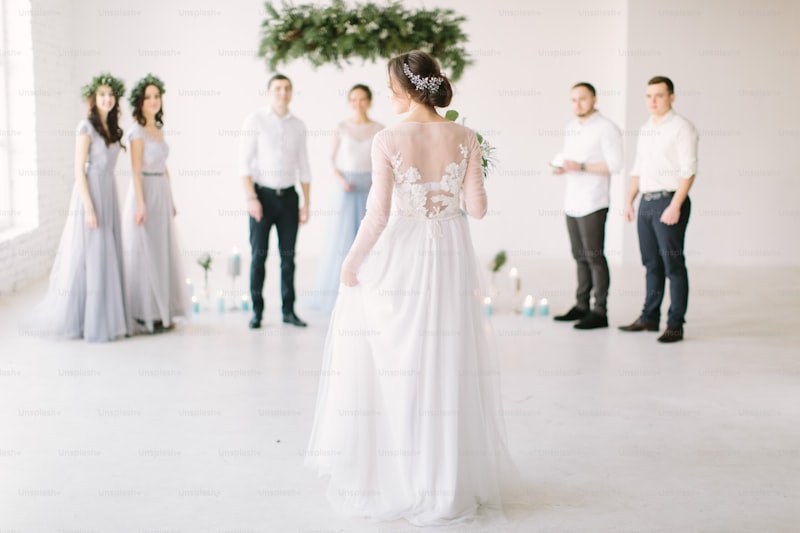Comfort vs. Style in Wedding Dresses: Finding the Perfect Balance
Comfort vs. Style in Wedding Dresses: Finding the Perfect Balance
Planning a wedding involves numerous decisions, from the venue to the guest list, but one of the most important choices for many brides is selecting the perfect wedding dress. In this article, we will explore the intricate relationship between comfort and style in Wedding dresses, offering insights that can help brides navigate their options and ensure their big day is as enjoyable as it is beautiful.
Understanding the Importance of Comfort and Style
When it comes to Wedding dresses, two primary elements typically come into play: comfort and style. While many brides aspire to wear an exquisite gown that reflects their personal taste and aesthetic, the practicality of comfort should not be overlooked. After all, a wedding day often involves hours of celebration, dancing, and numerous photo opportunities.
Why Comfort Matters
Wearing an uncomfortable dress can detract from a bride's experience on her big day. Here are several reasons why comfort should be a significant factor in your choice:
- Mobility: A comfortable dress allows for ease of movement. This is essential for activities such as walking down the aisle, dancing at the reception, and mingling with guests.
- Fit: Proper fit can significantly enhance comfort. Brides should consider having their gowns tailored to fit their body shape perfectly, ensuring they feel secure and confident.
- Weather Factors: Outdoor weddings can bring unpredictable weather. Lightweight fabrics and breathable designs are crucial for maintaining comfort in various conditions.
The Allure of Style
While comfort is non-negotiable, style is an equally critical component when choosing a wedding dress. A visually stunning gown can enhance a bride's confidence and help create unforgettable memories. Here are some popular Wedding Dress Styles:
| Style | Description | Ideal For |
| A-Line | Fitted at the bodice and flaring out from the waist | All body types |
| Mermaid | Fitted until the knee, then flares out | Curvy figures |
| Ball Gown | Full skirt, fitted bodice | Formal weddings |
| Sheath | Fits closely to the body from head to toe | Lean figures |
Each style has its distinct aesthetic appeal, which can greatly influence a bride's choice. However, brides must weigh these styles against their comfort levels to ensure they can enjoy their day to the fullest.
Finding the Perfect Balance
Now that we've established the significance of both comfort and style, how can brides find the perfect balance? Here are some effective strategies:
1. Choose the Right Fabric
Fabric plays a pivotal role in how comfortable a wedding dress feels. Common materials include:
- Satin: Durable and smooth but can be heavy.
- Lace: Adds elegance but might be less breathable.
- Chiffon: Lightweight and airy, ideal for comfort.
Consider trying on dresses made of various fabrics to see which ones you find most comfortable without sacrificing style.
2. Opt for Versatile Designs
Brides may want to consider versatile designs that can accommodate a range of movements. For example, a gown with a removable outer layer can transition from a formal ceremony to a more relaxed reception.
3. Prioritize Fit and Tailoring
Investing in professional tailoring is essential to ensure that the dress fits perfectly to your body. A well-tailored dress enhances comfort and accentuates your features, combining both style and ease of wear.
4. Consider the Season and Venue
Your wedding venue and the season will have a significant impact on your dress choice. For an outdoor summer wedding, lightweight fabrics, and shorter hemlines can enhance comfort, while a winter wedding may call for long sleeves or heavier materials.

Real-Life Experiences
To better understand how comfort and style interplay in Wedding dresses, let's explore a few real-life examples from brides who have shared their stories:
- Jane: Jane chose a stunning A-line gown for her spring wedding. She prioritized comfort by selecting a lightweight chiffon material that allowed her to dance all night without feeling restricted.
- Katie: Katie fell in love with a ball gown style. Despite its elegant appearance, she struggled with mobility. Luckily, she had the guts to adjust her dress to include a high slit, striking a beautiful balance between comfort and style.
Avoiding Common Pitfalls
Brides should be mindful of common pitfalls when selecting their wedding dress:
- Overlooking Comfort: Don't get so caught up in trends that you forget about how the dress feels.
- Neglecting Tailoring: Always allow extra time for fittings to avoid last-minute issues.
- Ignoring Venue Conditions: Always consider the temperature and space available at your venue.
Conclusion: The Ultimate Choice
Finding the right wedding dress is a blend of style and comfort. While aiming for that show-stopping look, don’t forget to prioritize how the gown feels against your body. After all, no one wants to spend their wedding day worrying about discomfort. By considering the fabric, opting for versatile designs, ensuring a perfect fit, and accounting for the season and venue, brides can select a dress that allows them to shine on their special day.
Remember, a wedding dress is not just a fashion statement; it's a part of an unforgettable experience. Cherish the journey to finding your gown, and most importantly, enjoy every moment of your big day!
